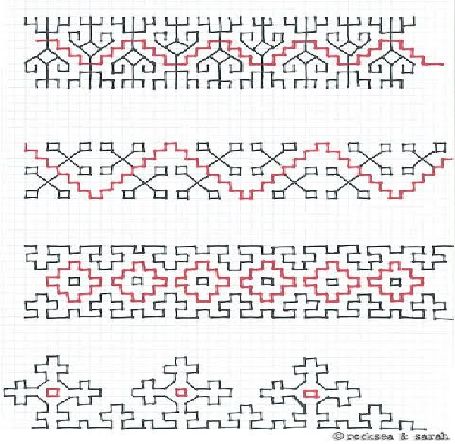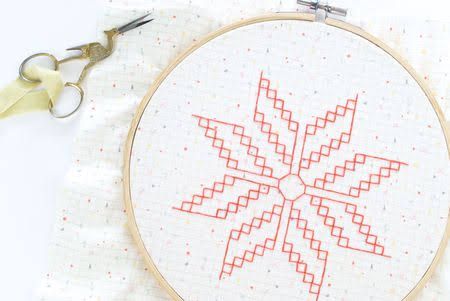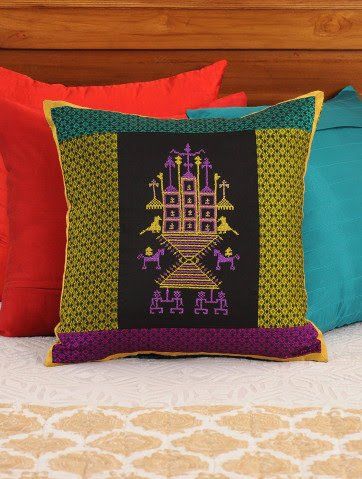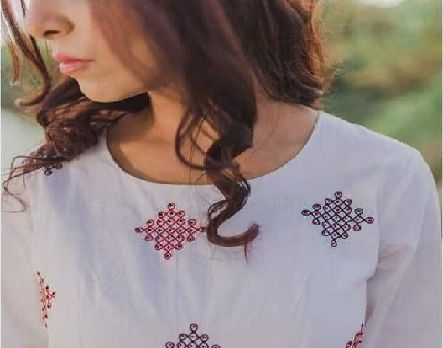Kasuti Embroidery
Sep 25, 2019 • 899 views
Background and Origin
One of the famous traditional forms of folk embroidery practiced in Karnataka, Kasuti embroidery has its history as old as one can think of tracing. Originated in the district of Dharwad in the western part of Karnataka, the evidences hint towards it beginning in the Chalukya empire during the 7th century. The word ‘Kasuti’ is made by joining two words ‘Kai’ which means hand and ‘Suti’ which means cotton, thus making it an art form done with thread on cotton fabric using one's own hands. Kasuti embroidery established itself as an important art form during the Mysore Empire where the women courtiers were expected to be accomplished in at least sixty four art forms, Kasuti being one of those.

Dharwad Sari - Source: Picbear
Methods and Varieties
The first thing that is required for any kind of artistic production is the correct materials to make the end product perfect. In Kasuti Embroidery, the types of threads that are to be used are its main assets. Originally silk threads were used for the embroidery but like any other thing, the changing times influenced the use of materials in this art form too. Nowadays mercerized threads made of cotton are used in place of silk yarns. This change in material is basically due to the color fastness that comes with using cotton instead of silk. Despite the fact that the number of strands used in a design differs from the material used in motifs and stitches, it is usually seen that two strands are used for fine work and four for bringing coarseness in the product.
Since Kasuti embroidery is a continuous stitch without any knots, it is important especially for beginners to prepare a design from beforehand. Graph paper is one of the ways in which the designs can be made.

Common Kasuti Patterns- Source : Embroidery Rocksea
Next comes the transferring of the design onto the fabric. This can be done using a tracing paper to trace the designs directly on the cloth that we are working on.
Then comes the final and the most important step which is weaving. Since the embroidery limits one to not end the stitch anywhere in between and then begin again, one needs to be very careful while doing the needlework especially the corners so that the stitch comes out to be very neat.
There are basically 4 types of stitches –
Gavanthi - It is derived from the word Gantu meaning 'knot'. It is basically a running stitch, double in nature and can be worked in all directions- vertical, horizontal or diagonal.
Murgi - It is quite similar to Gavanthi stitch but differs in the sense that it is done in a stepwise manner and is in a zigzag form making the design look like a staircase.

Murgi Stitch - Source: The Spruce Crafts
Negi - Negi in Kannada language literally means 'to weave' and thus rather that a simple stitch it gives the effect of an overall design. Unlike others it is a typical running or darning stitch.
Menthi - The name of this stitch means 'Fenugreek seed'. This technique refers to the ordinary cross stitch. This stitch is used to fill in the designs and is prominent on Ikat sarees.
Creative Inspiration
The designs in this embroidery are inspired from the immediate surroundings of the people from Karnataka. The ideas are fused together with religious and domestic elements to create geometric patterns that appeal to the people. The temples being a significant part of the culture of Karnataka, they have an influence on the designs made in Kasuti embroidery as well.
Elements like Gopurams of temples, chariots, palanquins, lotus, tuisi katti etc are all religiously inspired. Some of the standard motifs include - Elephants, peacocks, flowers, other parts of flora and fauna and cradles and anklet bells.

Elephant Motif - Source: Pinterest
Current Scenario
In the present scenario, despite tough competition, Kasuti embroidery has made a separate place for itself. These embroidery designs have taken a leap and have jumped from Silk sarees to a number of other objects. When talking about the clothing industry, this embroidery can be seen on almost any kind of outfit whether it is a suit, Kurtis, skirts or tops. This embroidery is being employed in a lot of home decor materials such as to create designs on furniture covers as well as on curtains. Even in sarees, constant experimentation with the designs has lead to a completely new collection.

Kasuti Embroidery Cushion Cover- Source - WordPress
Kasuti and Fashion
With its unique techniques and beautiful designs, Kasuti embroidery has very well made a spot for itself in the fashion industry. Authentically popularized by the Dharwad sarees, this embroidery is being used by a lot of fashion designers to infuse its designs into a number of other things and give it a new face.

Kasuti Embroidery Kurta - Source: Pinterest
Future for Kasuti Embroidery
With the constantly growing popularity of Kasuti embroidery, especially in the form of Dharwad sarees, the future for this traditional folk art form seems to be very bright. Its versatility and suitability of being worn in almost any kind of weather are few of its plus points. Unlike a number of other traditional embroidery clothes that ask for high maintenance, Kasuti embroidery just like any other piece of clothing requires only ordinary washing and dry cleaning. All of these factors combined together with the intricacy and beauty of this embroidery are helping in increasing the global appeal of this art form.
